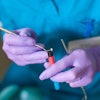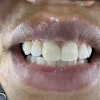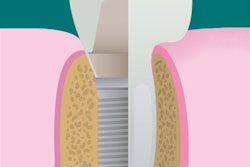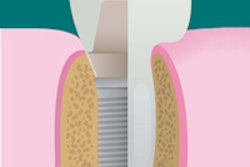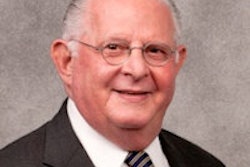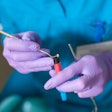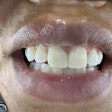Immediate loading of implant-supported mandibular overdentures was more successful when the implants had oxidized surfaces than when they had machined surfaces in a study reported in the International Journal of Prosthodontics (February 2010, Vol. 23:1, pp. 13-21).
Researchers at the Brånemark Centre of Australia treated 35 patients with problematic mandibular overdentures. They randomized the patients into two groups, placing machined-surface MK III Brånemark implants in one group and MK III Brånemarks with oxidized surfaces in the other group.
The researchers placed a single implant in the mandibular midline of each patient. To this implant they fixed a ball attachment and incorporated the retentive cap into the existing denture.
They recalled the patients at three, 12, and 36 months, taking x-rays with custom film holders and measuring stability with both manual and resonance frequency. They used visual analog scale questionnaires to record patient satisfaction.
Three of eight machined-surface implants failed right away, which the researchers considered an unacceptably high failure rate, so they stopped placing the machined-surface implants.
They found that one machined and two oxidized-surface implants were not stable enough to be immediately loaded, so in these patients they used a two-stage delayed loading protocol.
After 36 months, the 25 immediately loaded oxidized-surface implants all survived, and the patients said they were highly satisfied because the overdentures were much more comfortable and functional than before the implants were placed.
"It appears that over a three-year observation period, the immediately loaded single implant-retained mandibular overdenture, using an oxidized-surface implant and the existing prosthesis in a small group of prosthetically maladaptive patients, can provide a beneficial treatment outcome with a minimal financial outlay," the researchers concluded.
Copyright © 2010 DrBicuspid.com
